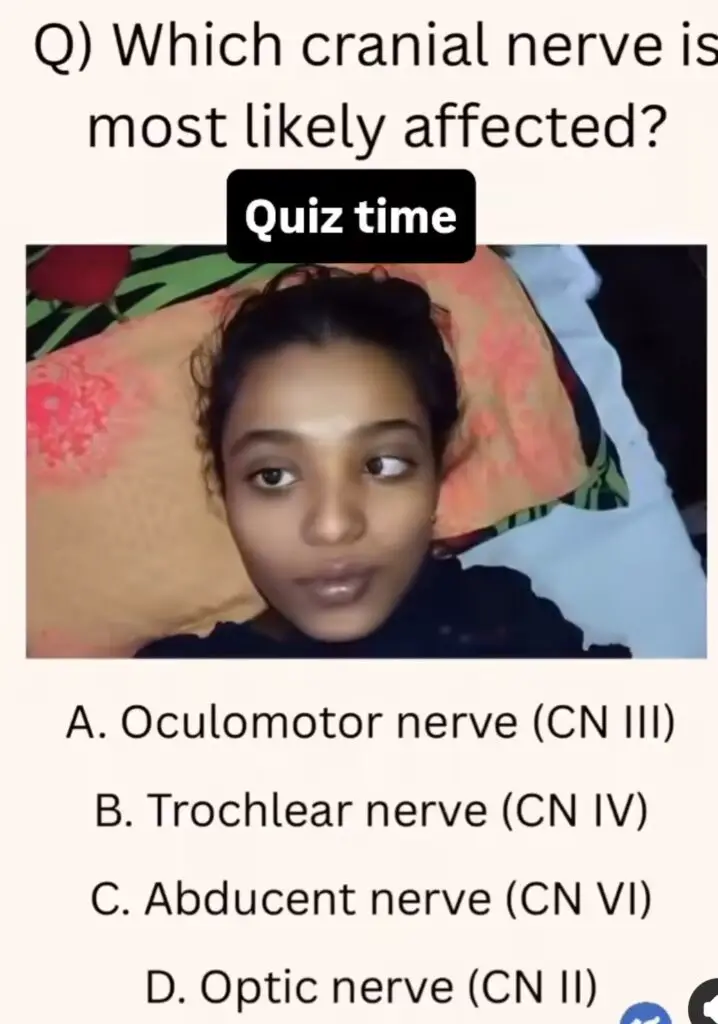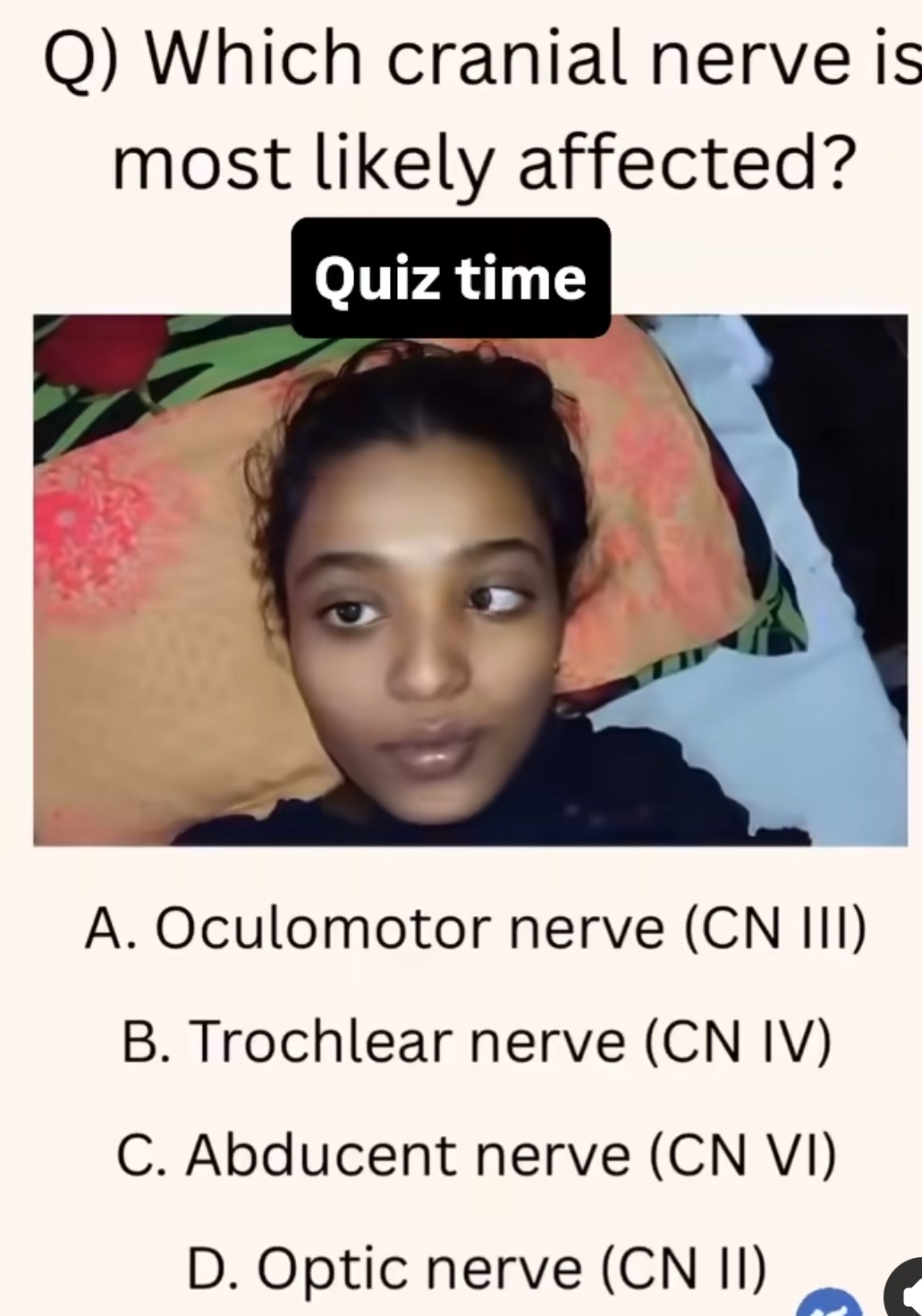Identify this condition

See the video here –
https://www.facebook.com/share/r/1ZaWioLzcn/?mibextid=wwXIfr
✅ Correct Answer: C) Abducent nerve (CN VI)
The lateral rectus muscle, which pulls the eye outward (abduction), is innervated by the Abducent nerve (CN VI).
When CN VI is affected, the lateral rectus becomes paralyzed. This means the medial rectus (innervated by CN III) acts unopposed, pulling the eye inward (towards the nose). Clinically, the patient cannot move the eye outward, leading to medial deviation (esotropia) and horizontal diplopia that worsens when looking toward the affected side.
❌ Why not the other options?
A) Oculomotor nerve (CN III)
CN III innervates most of the extraocular muscles: medial rectus, superior rectus, inferior rectus, and inferior oblique, as well as levator palpebrae superioris and the parasympathetics for pupil constriction. A CN III palsy causes ptosis (droopy eyelid), dilated pupil, and the eye being pulled down and out (due to unopposed action of lateral rectus and superior oblique). Since the eye here is turned inward, not down-and-out with ptosis, CN III is not the correct answer.
B) Trochlear nerve (CN IV)
CN IV innervates the superior oblique muscle, which primarily intorts and depresses the eye when adducted. A CN IV palsy causes vertical diplopia and the eye may drift upward, but it does not cause an inward deviation at rest. Hence, this presentation does not fit a trochlear palsy.
D) Optic nerve (CN II)
CN II is purely sensory — it transmits visual input from the retina to the brain. An optic nerve lesion causes loss of vision (partial or complete), not abnormal eye position or movement. Since the problem here is restricted to eye movement, CN II cannot be the cause.
Key Clinical Pearl:
If the eye is stuck inward (esotropia) and cannot move outward, always think of a CN VI (Abducent) palsy.
Discover more from An Eye Care Blog
Subscribe to get the latest posts sent to your email.


You must be logged in to post a comment.